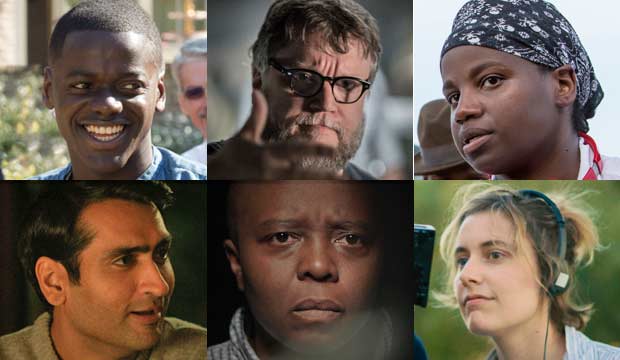In Conclusion
There's a long way to go...
Over the past few months of writing this blog, it's clear to see that whilst the representation of the underrepresented in our society is less than favourable, there is change coming in the form charters, riders, and initiatives. There is a deeply rooted problem with inequality and a lack of diversity that the UK and US film and television industries have only just started to try and solve. There is a long way to go before all of the wrongs have been made right. |
| Nominees at the 2018 Academy Awards were more diverse than usual. (source). |
As a young, working-class, mixed race male who is a member of the LGBTQ+ community, I hope that my chances of entering these industries aren't hindered by backwards ideas and mindsets, but instead perhaps helped by the initiatives set in place to help people like me find their feet in this world that is lead by straight, white men.
Data and statistics from Directors UK, Diamond: The First Cut, and The Pudding show us that in most instances, representation on, and behind the screen is far from what it could be. Those employed as actors, directors, producers, writers, gaffers, camera operators, and more do not reflect the rich diversity of the UK population, and suggest that those minorities who do try to crack into the business find it hard to reach anywhere near to the top. Thanks to the initiatives previously mentioned throughout this blog, it's clear to see that certain industry leaders want this to change.
It's not only people within the industry that want change however, with studies such as those from the Creative Arts Agency showing clear interest in diverse filmmaking from audiences. Recently, films such as Black Panther (Ryan Coogler, 2018), Wonder Woman (Patty Jenkins, 2017), and Star Wars: The Last Jedi (Rian Johnson, 2017) have been performing exceedingly well at the box office, and have been noted for providing young fans across the globe with positive role models, the likes of which have never been seen before. My own survey on audience perception of diversity in film and TV shows that audiences acknowledge the need for change both on and off the screen in regard to racial, gender, and sexuality representation.
Alongside issues within the industry, it was also interesting to look at statistics on drama, film, and television education to see whether or not (the lack of) industry diversity reflected that of those in education. Unsurprisingly, there is an almost 50/50 gender split amongst those enlisted on film courses in the UK, with institutions such as RADA providing bursaries for those from underprivileged backgrounds, as well as targets for a more diverse cohort. This all leads to further evidence that the problem is with the industry itself.
Hopefully, with access to all of this information - and a new generation of socially aware filmmakers ready put their stamp on the entertainment world - production companies will begin to make more well informed decisions on casting and directing, and will be putting more diverse teams together to create nuanced, authentic, and accurate work that everyone will be able to see themselves in, no matter skin colour, gender, physical or mental ability, sexual orientation, or culture.
Hollywood, the world is watching.


Comments
Post a Comment